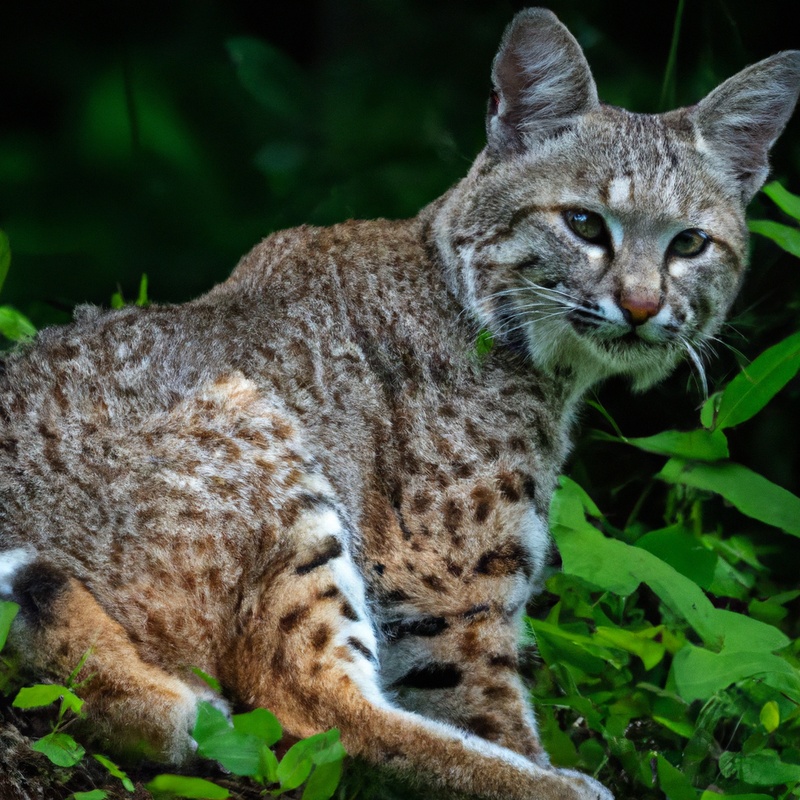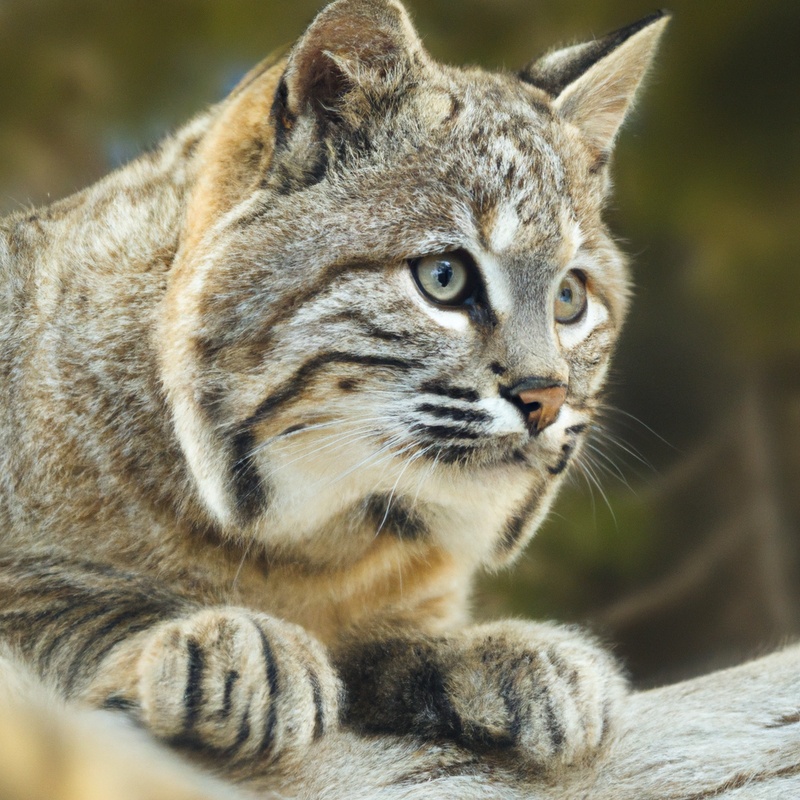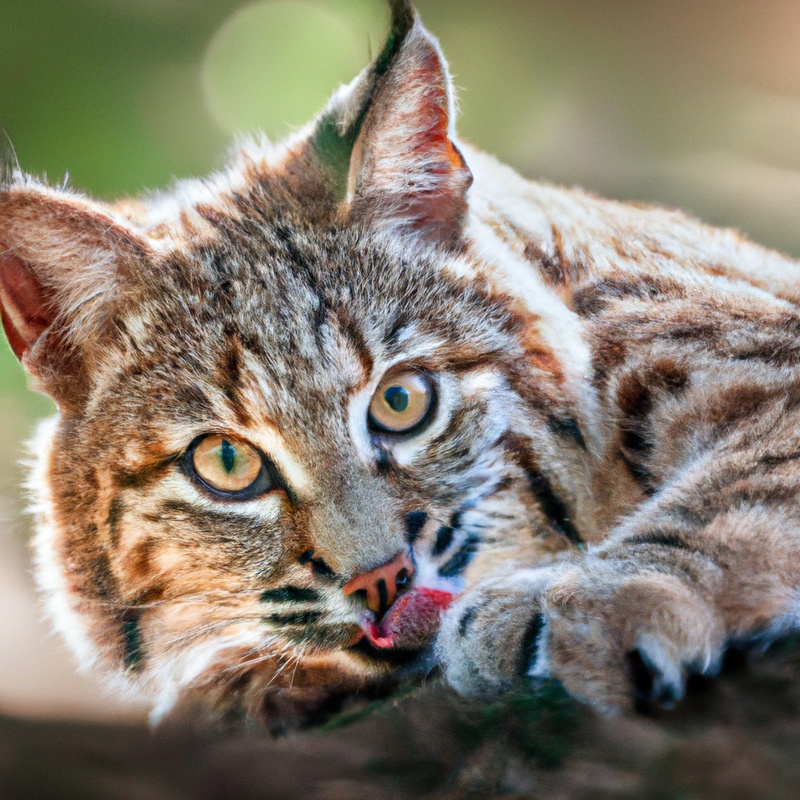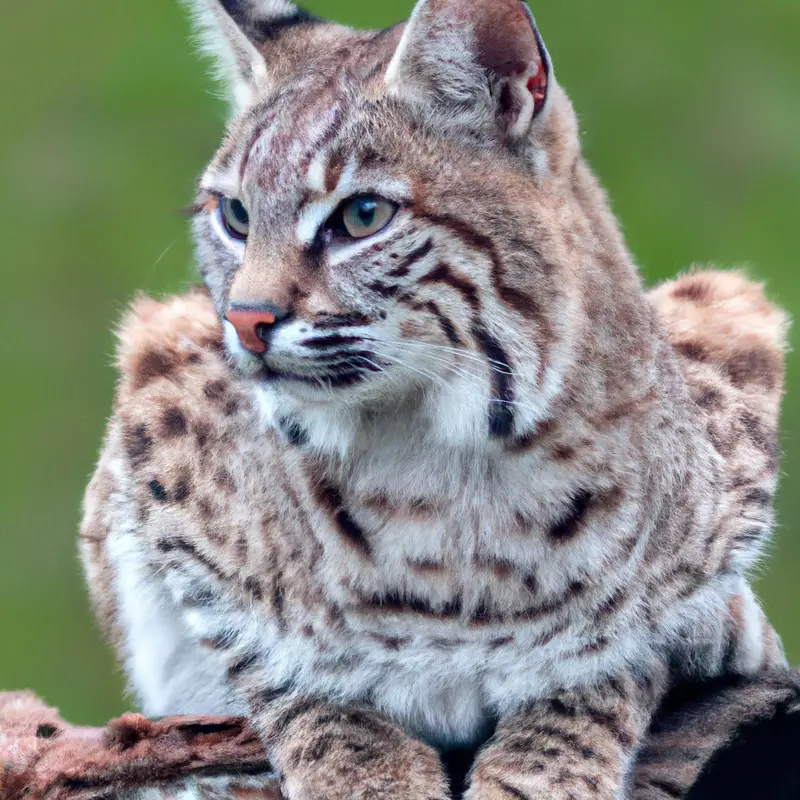Key Takeaways:
- The hunting of bobcats is legal in Arkansas.
- There are specific regulations and requirements to follow when hunting bobcats in Arkansas.
- Hunting bobcats can help manage their population and protect other wildlife species.
- Conservation organizations play a crucial role in maintaining sustainable bobcat hunting practices.
Are you ready to embark on an adrenaline-pumping adventure in the heart of Arkansas?
Well, grab your gear and unleash the hunter within because today we’re diving into the thrilling world of bobcat hunting in the Natural State! As an expert in the field, I’ll guide you through the regulations and permits you need, the best hunting areas to explore, and share some invaluable tips for a successful and ethical hunt.
Get ready to master the art of tracking, calling, and ambushing these elusive predators.
So, let’s dig in and discover the secrets of bobcat hunting in Arkansas!
Aspect | Regulations |
|---|---|
Season | September 1 – February 28 |
Bag Limit | 4 per person per season (total) |
Hunting Methods |
|
Permit Required | Yes |
Tagging Required | Yes |
Resident License | $25 |
Non-Resident License | $150 |
Bobcat Hunting Regulations in Arkansas
Hunting Seasons and Bag Limits
Hunting Seasons and Bag Limits in Arkansas are set by the state to ensure sustainable management of wildlife populations.
The bobcat hunting season generally runs from December 1st to February 29th.
However, it’s important to note that specific dates may vary each year, so it’s crucial to check the Arkansas Game and Fish Commission’s website or contact local authorities for the most up-to-date information.
As for bag limits, hunters in Arkansas are allowed to harvest up to two bobcats per season.
It is crucial to familiarize yourself with the regulations and adhere to the bag limits to help maintain a healthy bobcat population in the state.
Remember, responsible hunting practices contribute to conservation efforts and help preserve the overall balance of wildlife ecosystems.

Required Licenses and Permits
To legally hunt bobcats in Arkansas, you must have the appropriate licenses and permits.
This includes a valid Arkansas hunting license, which can be obtained online or at various authorized locations.
Additionally, you must possess a furbearer permit, which is specific to hunting bobcats and other fur-bearing animals.
It’s important to ensure that these licenses and permits are up to date and on your person while you’re hunting.
Remember to always follow the regulations and guidelines outlined by the Arkansas Game and Fish Commission to ensure a safe and legal hunt.

Hunting Methods and Equipment Restrictions
Hunting bobcats in Arkansas requires the use of specific hunting methods and adhering to equipment restrictions.
You can use guns or archery equipment during the designated hunting season.
However, using dogs to tree or corner bobcats is not allowed.
It’s important to note that artificial lights and electronic calls are also prohibited when hunting bobcats in Arkansas.
Make sure to check the Arkansas Game and Fish Commission website for any updates or changes to the hunting methods and equipment restrictions before you head out.
Happy hunting!

Best Bobcat Hunting Areas in Arkansas
State Parks and Wildlife Management Areas
State Parks and Wildlife Management Areas are excellent locations for hunting bobcats in Arkansas.
These areas are carefully managed to maintain healthy populations of wildlife, including bobcats.
They provide optimal hunting grounds and offer a variety of habitats, such as forests, wetlands, and grasslands, where bobcats thrive.
State Parks and Wildlife Management Areas often have specific hunting regulations in place, so be sure to familiarize yourself with the rules before embarking on your hunting adventure.
With the abundance of wildlife and proper management, these areas offer fantastic opportunities for successful bobcat hunting.
National Forests and Public Lands
If you’re looking for places to hunt bobcat in Arkansas, you’ll want to consider exploring the National Forests and Public Lands.
These areas offer vast expanses of natural habitat where bobcats thrive.
Arkansas has several national forests, such as Ozark-St. Francis National Forest and Ouachita National Forest, that provide opportunities for hunting.
Additionally, various public lands across the state, including Wildlife Management Areas and National Wildlife Refuges, are worth checking out.
Just make sure to obtain the necessary permits and adhere to all regulations when planning your bobcat hunting adventure in these areas.
Tips for a Successful Bobcat Hunt
Scouting and Identifying Bobcat Tracks and Sign
When scouting for bobcat tracks and sign, there are a few things you need to look out for.
First, check for tracks in muddy or soft soil.
Bobcat tracks are about two to three inches wide and have four round toes with no claw marks.
Look for tracks near water sources or along game trails.
Additionally, keep an eye out for scratch marks on trees, logs, or other surfaces.
Bobcats use these marks to communicate with other cats and to sharpen their claws.
By paying attention to these signs, you can increase your chances of identifying bobcat activity in an area.
Bobcat Calling Techniques
When it comes to bobcat calling techniques, there are a few key strategies you can use to increase your chances of success. One effective method is using distress calls, such as those of a wounded animal, to lure in bobcats.
Another technique is using mating calls to attract male bobcats during their breeding season.
It’s important to be patient and use a quality predator call to mimic the sounds accurately. Set up in an area with good visibility and be prepared for a challenge.
With practice and persistence, you can enhance your bobcat calling skills and improve your hunting experience.
Setting Up Effective Bobcat Ambushes
To set up effective bobcat ambushes, it’s important to consider a few key factors. First, choose an area with high bobcat activity, such as near their preferred hunting grounds or known dens.
Second, identify natural or man-made obstacles that can funnel the bobcats towards your desired location.
Third, create concealment by using camouflaged blinds or natural cover. Lastly, use attractants like scent lures or prey distress calls to entice bobcats to investigate.
By carefully planning and setting up your ambush, you increase your chances of a successful bobcat hunt.
Bobcat Hunting Gear and Clothing
Firearms and Ammunition Recommendations
When it comes to firearms and ammunition recommendations for hunting bobcats in Arkansas, there are a few things to consider.
Firstly, you’ll want a rifle chambered in .243 or larger, as bobcats can be elusive and require a powerful shot.
Secondly, choose a rifle with a scope that provides clear visibility in low light conditions.
Thirdly, for ammunition, opt for hollow point or soft point bullets for maximum effectiveness.
Always ensure that you are using legal ammunition that complies with local regulations.
Remember to practice with your chosen firearm and ammunition to familiarize yourself with their performance before heading out for a hunt.
Essential Hunting Gear and Accessories
Essential hunting gear and accessories are vital for a successful hunting trip. Here are a few items you shouldn’t forget to bring with you:
- Weapon of choice: Your firearm or bow with proper ammunition or arrows.
- Hunting clothing: Camouflage apparel to blend in with the surroundings and stay hidden.
- Footwear: A comfortable pair of hunting boots that provide support and keep your feet dry.
- Optics: Binoculars or a spotting scope to help you spot game from a distance.
- Calls: Various game calls, such as a predator call, can help attract your target.
- Field dressing kit: To clean and process your harvested game.
- Backpack: A backpack to carry all your gear and other essentials like water, snacks, and a first aid kit.
Remember to check the hunting regulations and requirements in your area to ensure you have all the necessary licenses and permits. Happy hunting!
Appropriate Clothing and Footwear
When heading out to hunt bobcats in Arkansas, it’s important to wear appropriate clothing and footwear.
Here are some key things to consider:
- Camouflage: Choose clothing that blends in with the natural environment, like Mossy Oak or Realtree patterns. This will help you remain unseen by bobcats.
- Layering: Dress in layers to accommodate changing weather conditions. This allows you to regulate your body temperature and stay comfortable throughout the hunt.
- Comfortable Footwear: Opt for sturdy, waterproof boots with good traction. You’ll be walking long distances and need footwear that can withstand rough terrain.
- Noise Reduction: Avoid clothing that makes noise when you move, like swishing fabric or squeaky footwear. This will help you stay quiet and undetected in the field.
- Safety: Always wear a blaze orange hat or vest to remain visible to other hunters. It’s essential for your safety in the woods.
By dressing appropriately and thinking about functionality, you’ll be well-prepared and comfortable during your bobcat hunting adventure in Arkansas.
Hunting Bobcats Ethically and Responsibly
Understanding Bobcat Behavior and Ecology
Understanding Bobcat Behavior and Ecology is essential for successful bobcat hunting.
Bobcats are solitary animals and have large territories.
They are most active during dawn and dusk, making these the best times to hunt them.
Bobcats are opportunistic predators, feeding on small mammals, birds, and even deer.
They are excellent climbers and swimmers, adapting to various habitats such as forests, deserts, and swamps.
Understanding their behaviors and preferred habitats will increase your chances of finding and hunting them effectively.
Researching their habits, tracking signs in the wild, and setting up trail cameras can provide valuable insights into their behavior and help you strategize your hunting approach.
Conservation and Wildlife Management Practices
Conservation and wildlife management practices play a crucial role in ensuring the sustainability and preservation of our natural resources.
This involves the protection of habitats and the enforcement of regulations that promote the well-being of wildlife populations.
Additionally, monitoring and research are key components of effective wildlife management, helping us understand population dynamics and implement appropriate conservation measures.
By working together with environmental agencies and adopting responsible hunting practices, we can contribute to the conservation of our valuable wildlife species for future generations to enjoy.
Proper Handling and Utilization of Harvested Bobcats
Proper handling and utilization of harvested bobcats is essential to ensure ethical and responsible hunting practices.
After harvesting a bobcat, it is important to handle it with care to avoid damage to the fur and maintain its value.
One way to do this is by using a well-constructed game bag or a soft cloth to transport the bobcat.
Additionally, the fur should be properly prepared by fleshing and stretching it before tanning.
Once the fur is ready, it can be used for various purposes such as making clothing or accessories.
Remember to always follow local regulations regarding the handling and utilization of harvested bobcats for a sustainable hunting experience.
Frequently Asked Questions (FAQs)
Are there any specific hunting regulations for hunting bobcats in Arkansas?
Yes, there are specific regulations for hunting bobcats in Arkansas.
Bobcat hunting in Arkansas is regulated by the Arkansas Game and Fish Commission (AGFC).
Hunters must have a valid hunting license, and a special permit is required to hunt bobcats.
The hunting season for bobcats in Arkansas typically runs from November to February.
There may be additional restrictions on hunting methods and bag limits, so it’s essential to check the most up-to-date regulations provided by the AGFC before heading out on your bobcat hunting adventure.
What is the best time of year to hunt bobcats in Arkansas?
The best time of year to hunt bobcats in Arkansas is during the winter months, particularly from November to February.
During this time, the bobcats are more active and their fur is at its prime.
It is also easier to track and spot them in the snow.
Additionally, bobcats are known to be more active during dawn and dusk, so hunting during these times can increase your chances of success.
Always check the local hunting regulations and obtain the necessary permits before heading out.
Happy hunting!
Can I use dogs for bobcat hunting in Arkansas?
Yes, you can use dogs for bobcat hunting in Arkansas. Arkansas allows the use of dogs in the pursuit of bobcats during the designated hunting season.
However, there are specific regulations and requirements that you must follow.
For example, you must have a valid hunting license and abide by the bag limit and season dates. It is important to familiarize yourself with the hunting regulations set forth by the Arkansas Game and Fish Commission to ensure a legal and responsible hunting experience.
Is there a limit to how many bobcats I can harvest in Arkansas?
In Arkansas, there is a limit to how many bobcats you can harvest.
The limit for bobcat harvest is two bobcats per person per trapping season.
This limit is in place to ensure the sustainability and conservation of bobcat populations in the state.
It’s important to abide by these limits to help maintain a healthy balance in the ecosystem.
Make sure to check the current regulations and guidelines set by the Arkansas Game and Fish Commission before heading out to hunt bobcats.
Happy hunting!
Are there any restrictions on selling or trading bobcat pelts in Arkansas?
There are restrictions on selling or trading bobcat pelts in Arkansas. The state requires a valid trapping license, and only licensed fur dealers can buy or sell bobcat pelts.
Additionally, a tag or seal must be attached to each pelt, indicating it has been legally obtained.
The Arkansas Game and Fish Commission regulates the trapping and trading of bobcat pelts to ensure conservation and sustainable management of the species.
Final Verdict
Hunting bobcats in Arkansas can be an exciting and rewarding experience for those who are properly equipped and prepared.
With clear regulations in place, such as hunting seasons and bag limits, as well as the necessary licenses and permits, hunters can enjoy a responsible and ethical pursuit.
By utilizing effective scouting techniques, calling methods, and ambush setups, hunters can increase their chances of a successful hunt.
It is important to prioritize conservation and wildlife management practices, and to handle and utilize harvested bobcats responsibly.
With the right gear, clothing, and knowledge, hunters can have a memorable and fulfilling bobcat hunting adventure in Arkansas.








